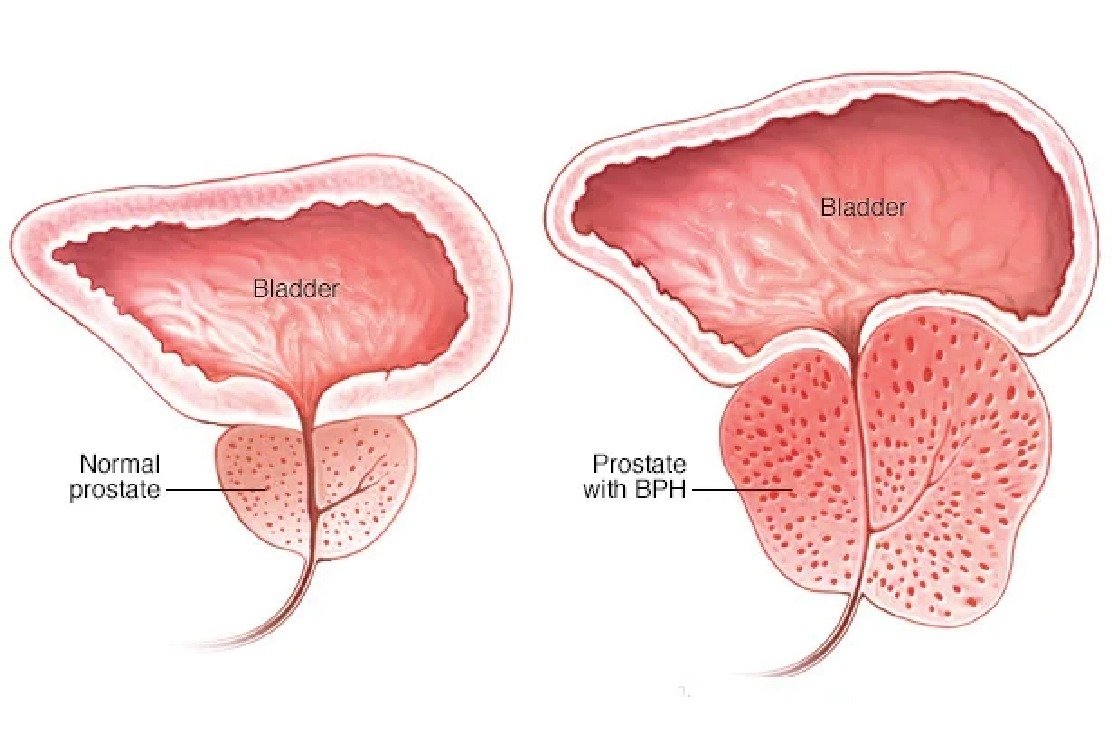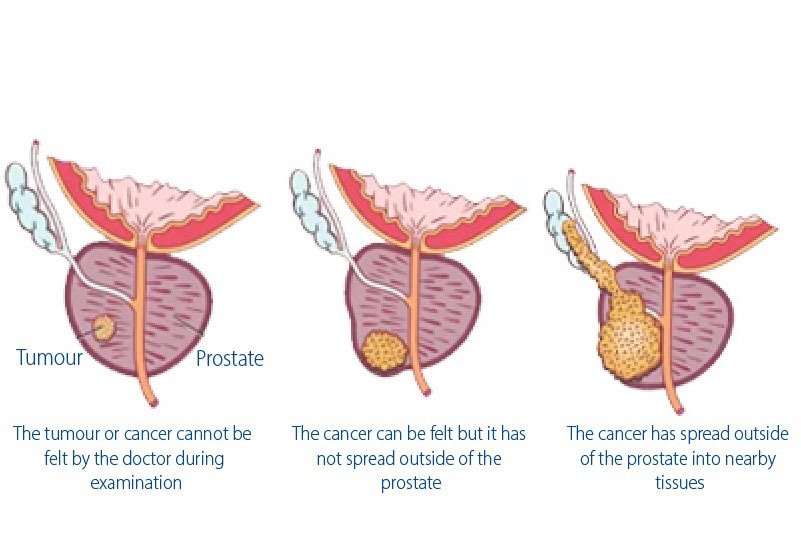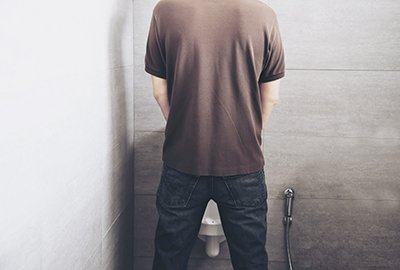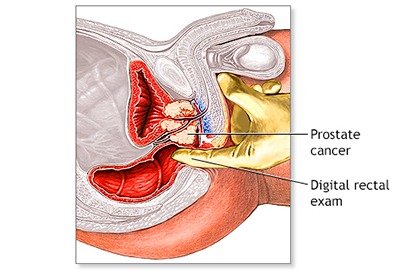Content
- Prostatitis vs. BPH vs. Prostate Cancer: Understanding the Differences
- Understanding Prostatitis, BPH, and Prostate Cancer
- Enlarged Prostate vs. Prostate Cancer
- BPH vs. Prostate Cancer Symptoms
- Difference Between BPH and Prostate Cancer
- How Can You Tell the Difference Between BPH and Prostate Cancer?
- The Importance of a Medical Consultation: Why You Can't DIY Diagnose
- Role of PSA Testing
- Imaging and Biopsy
- Can BPH turn into prostate cancer?
- How is prostatitis different from BPH and prostate cancer?
- What treatments are available for BPH and prostate cancer?
- Can lifestyle changes help with prostate health?
- Conclusion
Prostatitis vs. BPH vs. Prostate Cancer: Understanding the Differences
Let's face it, guys, talking about prostate issues isn't exactly a walk in the park.
But here's the thing: your prostate is a pretty important player on your team, responsible for stuff like making seminal fluid and keeping your urinary flow smooth.
So, when things down there start feeling a bit off, it's natural to wonder what's going on.
The truth is, there are a few different culprits that can cause prostate problems.
The big three we'll be tackling today are prostatitis, BPH (benign prostatic hyperplasia), and prostate cancer.
While they all involve the prostate, they're actually quite different beasts.
Why is it important to tell them apart? Think of it like this: if your car is making a weird noise, you wouldn't take it straight to the junkyard, right?
You'd figure out if it's a loose screw (prostatitis) or needs a whole new engine (prostate cancer).
Distinguishing between these conditions helps us get the right diagnosis and treatment plan, keeping you feeling your best.
So, buckle up, fellas, and let's delve into the world of prostate health!

Understanding Prostatitis, BPH, and Prostate Cancer
Let's break it down:
What Is Prostatitis?
Think of prostatitis as an inflammation of the prostate gland.
It can be as annoying as a pebble in your shoe, or even as bothersome as a full-blown infection.
There are actually four main types of prostatitis:
- Acute Bacterial Prostatitis: This one comes on fast and furious, often with flu-like symptoms and burning urination.
It usually responds well to antibiotics.
- Chronic Bacterial Prostatitis: This is like a stubborn cousin of acute bacterial prostatitis, with symptoms that come and go but don't completely disappear.
Antibiotics are key here too.
- Chronic Prostatitis/Chronic Pelvic Pain Syndrome (CP/CPPS): This is the most common type, and it can be frustrating because there's no known cause or cure.
But there are treatments that can help manage the pain and discomfort.
- Asymptomatic Inflammatory Prostatitis: This one's a bit of a mystery: there's inflammation in the prostate, but you don't feel any symptoms.

What Is BPH (Benign Prostatic Hyperplasia)?
BPH stands for benign prostatic hyperplasia, which basically means your prostate gland gets a little bigger than usual.
It's not cancerous, but that extra bulk can press on your urethra (the tube that carries urine out of your body) and cause some bothersome symptoms, like:
- Frequent urination, especially at night
- Difficulty starting or stopping urination
- A weak urine stream
Unlike prostatitis, BPH is a natural part of aging for many men.

What Is Prostate Cancer?
Prostate cancer is the uncontrolled growth of abnormal cells in the prostate.
It's different from benign conditions like prostatitis and BPH because it has the potential to spread to other parts of the body.
Now, the good news is that prostate cancer is often slow-growing, and there are many effective treatment options available.
Here's the key takeaway: While all three conditions can affect the prostate, they have very different causes and treatments.
If you're experiencing any symptoms that worry you, don't hesitate to book an appointment with our urology team at Cevre Hospital.
We're here to answer your questions, distinguish between BPH vs. prostate cancer symptoms, and get you on the path to a healthy prostate.
Remember, early detection is key!

Enlarged Prostate vs. Prostate Cancer
Guys, sometimes things "down there" just don't feel quite right.
You might be noticing more frequent trips to the bathroom, a weaker stream, or even a burning sensation.
It's enough to make you wonder if you're dealing with an enlarged prostate (BPH) or something more serious like prostate cancer.
While both conditions involve the prostate gland, they're different beasts altogether.
In this post, we'll shed some light on what causes your prostate to take up more real estate and how to tell the difference between BPH and prostate cancer.
Causes of Prostate Enlargement
Imagine your prostate as a small walnut nestled just below your bladder.
Its main job is to produce seminal fluid and keep your urinary flow running smoothly.
But as men age, things can change.
The most common culprit behind an enlarged prostate is a condition called BPH (benign prostatic hyperplasia).
Think of BPH like a crowded apartment building: too many tenants (cells) in the same space.
It's not cancerous, but that extra bulk can squeeze the urethra (the tube that carries urine) and cause those bothersome urinary symptoms we mentioned earlier: frequent urination, weak stream, burning sensation (all classic BPH vs. prostate cancer symptoms to watch out for).
Here's the thing: doctors aren't exactly sure what triggers this cellular overcrowding in BPH.
It might be related to changes in hormone levels, like a decrease in testosterone and an increase in estrogen, as you get older.
Beyond aging, there are a few other factors that might contribute to an enlarged prostate:
- Family history: If your dad or brother had BPH, you might be more likely to experience it too.
- Lifestyle: Obesity and a lack of exercise might play a role.

Prostate Cancer Growth
Prostate cancer is a different story.
Here, abnormal cells in the prostate start multiplying uncontrollably.
Unlike BPH, prostate cancer is cancerous and has the potential to spread to other parts of the body.
The exact cause of prostate cancer is still being researched, but there are some risk factors to be aware of, like:
- Age: The risk increases significantly after 50.
- Genetics: Certain gene mutations can increase your chances.
- Family history: Having a father or brother with prostate cancer puts you at higher risk.

Here's the key difference: In BPH, the cells are growing but not harming the surrounding tissue.
In prostate cancer, the cells are abnormal and have the potential to become invasive.
Now, the good news is that prostate cancer is often slow-growing, and there are many effective treatment options available. But early detection is crucial.
Similarities Between Enlarged Prostate / BPH and Prostate Cancer
Let's be honest, both BPH and prostate cancer can put a damper on your bathroom routine.
Here's what they have in common:
- Urinary symptoms: Both conditions can cause frequent urination, especially at night, a weak stream, and difficulty starting or stopping urination.
These symptoms, sometimes referred to as BPH vs. prostate cancer symptoms, can be frustrating and disruptive to your sleep and daily life.
- Age: As men age, the risk of both BPH and prostate cancer increases.
It's a double whammy, but not a guaranteed one!

Key Differences Between BPH and Prostate Cancer
While they share some similar symptoms, BPH and prostate cancer are different ball games:
Development:
- BPH: This is a non-cancerous enlargement of the prostate gland. Imagine your prostate as a small walnut.
With BPH, it's like extra cells are squeezing in, making it bigger and pressing on your urethra (the tube that carries urine).
- Prostate Cancer: This is the uncontrolled growth of abnormal cells in the prostate.
These abnormal cells can spread to other parts of the body if left untreated.
Impact on Health:
- BPH: While BPH can be uncomfortable, it's not life-threatening.
There are effective treatment options available to manage the symptoms and improve your quality of life.
- Prostate Cancer: Early detection and treatment are crucial for prostate cancer.
The good news is that prostate cancer is often slow-growing, and there are many successful treatment options available.
Diagnosis:
- BPH: Diagnosis often involves a combination of a physical exam, a discussion of your symptoms, and sometimes a simple blood test like a PSA test.
However, an elevated PSA alone isn't enough to diagnose BPH or prostate cancer.
- Prostate Cancer: A digital rectal exam (DRE) and a Prostate-Specific Antigen (PSA) blood test can be helpful in initial diagnosis.
However, a definitive diagnosis of prostate cancer usually relies on a prostate biopsy.

BPH vs. Prostate Cancer Symptoms
Sometimes bathroom business gets a little, well, weird.
You might be hitting the porcelain throne more often than usual, struggling to unleash the full flow, or even noticing some blood.
It's enough to send you down a worried Google spiral, wondering if it's a harmless enlarged prostate (BPH) situation or something more serious like prostate cancer.
While both BPH and prostate cancer can affect your plumbing, they cause different kinds of trouble.
Understanding the BPH vs. prostate cancer symptoms can help you avoid unnecessary worry and get the right care.
BPH Symptoms
Imagine your prostate as a small walnut nestled below your bladder.
With BPH, this walnut gets a bit bigger, squeezing the urethra (the tube that carries urine) and causing some bothersome symptoms:
- Frequent urination: You might feel like you're constantly on the lookout for a bathroom, especially at night.
Those late-night trips can disrupt your sleep and leave you feeling exhausted.
This can be a real pain, especially if you're dealing with prostatitis on top of it all!
- Weak urine flow: Gone are the days of a powerful stream.
BPH can make it feel like you're dribbling or pushing to get things going.
- Difficulty starting urination: Ever feel like you're waiting for the spigot to turn on?
Starting urination can be a struggle with BPH.

These symptoms can definitely put a damper on your quality of life.
Prostate Cancer Symptoms
Prostate cancer is a different story.
Here, abnormal cells in the prostate start growing out of control.
The symptoms can be similar to BPH, but there are some red flags to watch out for that can help you tell the difference between BPH and prostate cancer:
- Blood in the urine: This is a clear sign that something's not quite right and needs to be checked by a doctor.
- Erectile dysfunction (ED): Trouble getting or keeping an erection can be a symptom of prostate cancer, but it can also have other causes.
- Pelvic pain or discomfort: A dull ache or burning sensation in the lower abdomen, pelvis, or even testicles could be a sign of prostate cancer.

Here's the key difference: BPH symptoms usually stay the same or progress slowly, while prostate cancer symptoms may get worse pretty fast.
Comparing BPH vs. Prostate Cancer Symptoms: A Side-by-Side Look
| Symptom | BPH | Prostate Cancer |
| Frequent urination | Yes | Yes |
| Weak urine flow | Yes | Yes |
| Difficulty starting urination | Yes | Yes |
| Blood in urine | No (rare) | Yes |
| Erectile dysfunction | No (rare) | Yes |
| Pelvic pain or discomfort | No (rare) |
Yes (more common) |
The takeaway: While there's some overlap, some symptoms are more concerning than others.
Difference Between BPH and Prostate Cancer
Picture this: you're suddenly feeling like you're constantly on the lookout for a bathroom, and even when you get there, things aren't flowing freely.
It's enough to make you wonder if it's a plumbing issue downstairs (BPH) or something more serious like prostate cancer.
While both BPH (benign prostatic hyperplasia, a fancy way of saying enlarged prostate) and prostate cancer can cause urinary woes, they're quite different.
Understanding the key differences between BPH and prostate cancer can help you avoid unnecessary worry and get the right care.
Diagnostic Procedures: Tests to Tell BPH from Prostate Cancer
When it comes to figuring out what's going on with your prostate, doctors have a toolbox full of tests:
BPH Diagnosis:
- Digital Rectal Exam (DRE): This quick in-office exam allows the doctor to feel the prostate for any lumps or bumps.
It might not be the most comfortable experience, but it's a crucial first step.
- Ultrasound: This painless test uses sound waves to create an image of your prostate, helping to identify any enlargement or abnormalities.
Prostate Cancer Diagnosis:
- Prostate-Specific Antigen (PSA) Test: This blood test checks the level of a protein called PSA produced by the prostate.
While high PSA can be a sign of prostate cancer, it can also be caused by BPH or even infection.
- Biopsy: If other tests raise concerns, a biopsy might be needed.
This involves taking a tiny tissue sample from the prostate to examine for cancer cells.
Don't worry, it's done with a local anesthetic to minimize discomfort.
- Imaging Tests: X-rays, CT scans, or MRI scans might be used to get a more detailed picture of the prostate and surrounding areas, especially if cancer is suspected.

Risk Factors for BPH and Prostate Cancer: Who's More at Risk?
Here's the thing: age isn't the only risk factor for prostate problems.
Let's break down the risk factors for each:
BPH Risk Factors:
- Age: The risk of BPH increases after age 50. It's almost like a birthday curse for your plumbing!
- Family History: Having a father or brother with BPH ups your chances.
- Lifestyle: Obesity and a lack of exercise might play a role.

Prostate Cancer Risk Factors:
- Age: The risk increases significantly after age 50. But hey, age is just a number, right?
- Family History: A family history of prostate cancer is a significant risk factor.
- Race: African American men are at a higher risk for prostate cancer.
- Genetics: Certain gene mutations can increase your chances.

The takeaway: Risk factors are important, but they don't guarantee a diagnosis.
It's crucial to talk to your doctor if you're experiencing any changes in your urinary habits.
How Can You Tell the Difference Between BPH and Prostate Cancer?
While both BPH and prostate cancer are both different monsters, there are ways to tell them apart, and it all starts with a trip to your friendly neighborhood doctor!
The Importance of a Medical Consultation: Why You Can't DIY Diagnose
Look, the internet can be a great resource, but diagnosing BPH vs. prostate cancer is best left to the professionals.
Here's why:
- Medical History: Your doctor will chat with you about your symptoms, family history (a risk factor for both BPH and prostate cancer), and lifestyle.
This can give them valuable clues about what might be going on.
- Physical Exam: A quick and (usually) painless exam can reveal a lot.
For example, a digital rectal exam (DRE) allows the doctor to feel the size and firmness of your prostate.

By combining your medical history with the physical exam, your doctor can already get a good sense of whether you're dealing with BPH or something else entirely, like prostatitis (inflammation of the prostate).
Role of PSA Testing
You might have heard about the PSA test: a blood test that measures prostate-specific antigen (PSA) levels.
Elevated PSA can indicate prostate issues, but here's the catch:
- PSA isn't perfect: High PSA doesn't automatically mean cancer.
BPH and even normal inflammation can also cause PSA levels to rise.
- Low PSA isn't a free pass: Cancer can still be present even with normal PSA levels.

So, the PSA test is a helpful tool, but it's just one piece of the puzzle when differentiating between BPH and prostate cancer.
Imaging and Biopsy
If further investigation is needed, your doctor might recommend imaging tests like MRI or CT scans.
These can create detailed pictures of your prostate, helping to identify any abnormalities that might point towards prostate cancer.
However, the gold standard for diagnosing prostate cancer is a biopsy.
This involves taking a small tissue sample from the prostate using a needle.
The sample is then examined under a microscope to see if there are any cancer cells.

Can BPH turn into prostate cancer?
The short answer: no. BPH is a benign enlargement of the prostate gland, like a grumpy old man taking up too much space on the bus.
Prostate cancer, on the other hand, is abnormal cell growth that can spread.
Think of it like this: BPH is like having a crowded bus, while prostate cancer is a rogue passenger causing trouble.
How is prostatitis different from BPH and prostate cancer?
Prostatitis is inflammation of the prostate, causing pain, burning urination, and even pelvic discomfort.
It's like your prostate got stung by a bee: not cool.
While prostatitis can share some symptoms with BPH (like frequent urination), it usually doesn't involve blood and resolves with treatment.
What treatments are available for BPH and prostate cancer?
The good news is, there are options for both!
For BPH, medications, minimally invasive procedures, and even surgery can help manage symptoms. Prostate cancer treatment depends on the severity and can include surgery, radiation, or hormone therapy.
Here's the key: early detection is crucial for both BPH and prostate cancer. Don't wait until things get really uncomfortable!
Can lifestyle changes help with prostate health?
Absolutely! Here are a few tips to keep your prostate happy:
- Diet: Fill your plate with fruits, veggies, and whole grains.
Lean protein and healthy fats are good too. Limit processed foods, red meat, and unhealthy fats.
- Exercise: Get your heart pumping most days of the week.
Aim for at least 30 minutes of moderate-intensity exercise: a brisk walk will do wonders!
- Maintain a healthy weight: Excess weight can put a strain on your prostate.
- Manage stress: Chronic stress can worsen urinary problems.
Find healthy ways to unwind, like yoga or meditation.
- Stay hydrated: Drink plenty of fluids throughout the day to keep things flowing smoothly.
By making these lifestyle changes and getting regular checkups, you can take charge of your prostate health and keep your plumbing running smoothly for years to come.
Conclusion
Think of your prostate as a small walnut nestled beneath your bladder.
When things go awry, this walnut can cause some trouble:
-
BPH: Imagine your walnut getting a bit too big, squeezing the urethra (the pee highway) and causing frequent urination, a weak stream, and that annoying feeling of urgency.
It's a plumbing issue, but not a cancerous one.
-
Prostatitis: This feels more like an angry hornet's nest in your pelvis.
Inflammation of the prostate can cause burning urination, pelvic pain, and even flu-like symptoms.
It's uncomfortable, but treatable with antibiotics or other medications.
-
Prostate Cancer: This is the big kahuna, where abnormal cells start growing out of control.
While some symptoms might overlap with BPH (like frequent urination), blood in the urine and persistent pain can be red flags.
Early detection is crucial for successful treatment.
The key takeaway here is this: early detection is vital for all three conditions.
If you're experiencing any changes in your urinary habits or prostate health, don't wait! Ignoring symptoms can lead to complications down the road.
Here's the good news: getting checked is easier than ever.
Our friendly urology team at Cevre Hospital is here to answer your questions, perform the necessary tests, and get you on the path to a healthy prostate.
Remember, you're in the driver's seat when it comes to your prostate health.
Here are some tips:
- Schedule regular checkups: Don't wait for symptoms to appear.
Talk to your doctor about a personalized screening plan, especially if you have a family history of prostate problems.
- Embrace a healthy lifestyle: Diet, exercise, and weight management can all play a role in prostate health.
Fill your plate with fruits, veggies, and whole grains, and don't forget to get moving!
- Listen to your body: Any changes in your urinary habits or prostate health deserve attention.
Don't hesitate to talk to your doctor, that's what they're there for!
If you're experiencing any changes in your urinary habits or prostate health, don't ignore them!
Schedule an appointment with our friendly urology team at Cevre Hospital.
We'll answer your questions, perform the necessary tests, and get you on the path to a healthy you-know-what.
Book an appointment today and take charge of your well-being!
